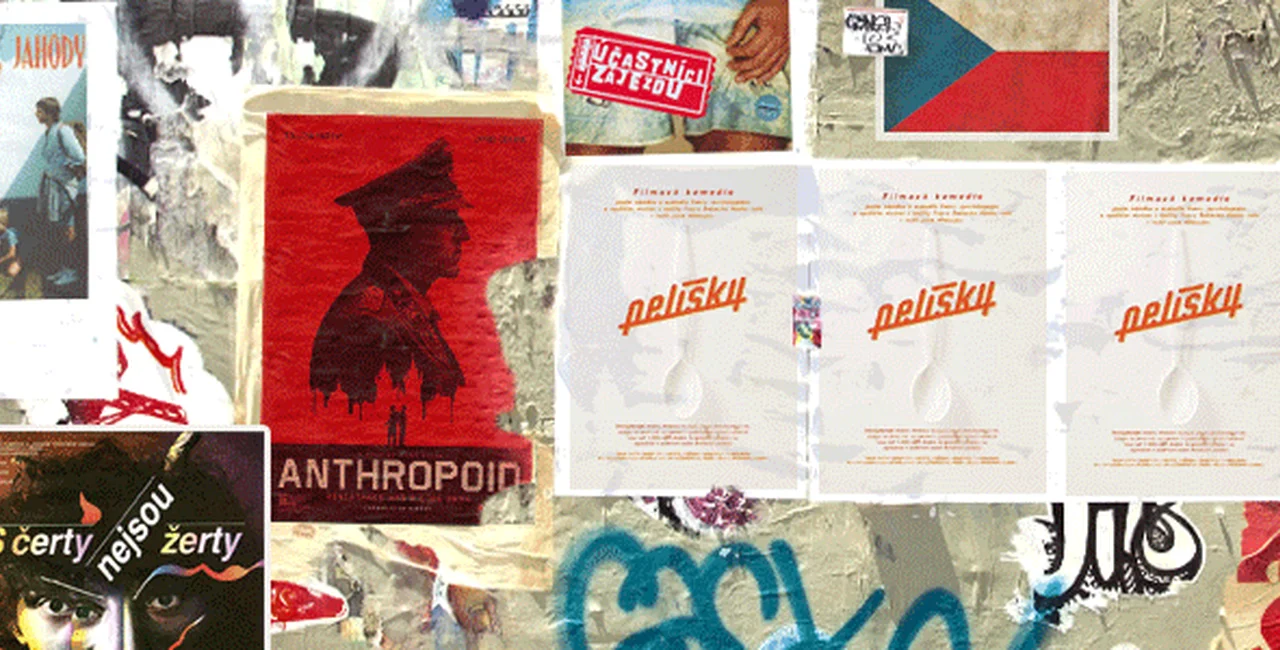Pelíšky / Cosy Dens (1999)
Probably one of the most beloved Czech films and soundtracks of all time, watch it for the snapshot it provides of Czech family life leading up to the ill-fated 1968 Prague Spring. Pelíšky portrays the wonderfully dark and quirky Czech sense of humour toward family, the communist regime, and themselves in general. It’s teeming with Czech Christmas traditions – chlebíčky, carp… and quality Polish spoons. A prequel, part of a trilogy by director Jan Hřebejk, is now playing in cinemas.
Slunce, seno, jahody / Sun, Hay and Strawberries (1984)
The first film in the famous trilogy that Czechs like a lot more than they’d care to admit. If Pelíšky describes Prague life, this describes village life. Set in the small town of Hoštice in South Bohemia, where director Zdeněk Troška himself grew up, Slunce, seno, jahody and the two films that follow, blend that iconic dry humour with a bit of slapstick. It’s all about gossip, scheming and what the neighbours are up to, as well as that undeniable envy, said to be a defining trait of Czechs of a certain age.
Samotáři / Loners (2000)
Another Prague-based film that explores relationships among groups of friends, not to mention the subcultures of partying, music, and drugs that began to dominate Prague’s nightlife in the early aughts. A famous soundtrack with singles from Jan P. Muchow and the Ecstasy of Saint Theresa introduces viewers to Czech indie music of the era, and there’s a even a memorable scene where a Czech family is treated as an attraction for Japanese tourists. Directed by David Ondříček.
Hoří, má panenko / The Fireman’s Ball (1967)
A small-town comedy and one of the defining films of the Czechoslovak New Wave that makes satirical use of the Czech attitude toward the corrupt communist regime of the late 1960s. Hoří, má panenko is set at the annual Firefighter’s Ball, and actually stars real local firemen rather than big name actors. This isn’t just a brilliant depiction of Czech people, this really IS Czech people. This is the final film director Miloš Forman made in Czechoslovakia before going into exile in the US and his first in color.
Musíme si pomáhat / Divided We Fall (2000)
This Oscar-nominated film, another cinematic victory for director Jan Hřebejk, is set in Nazi-occupied Czechoslovakia and harks back to village life and the melancholic existence of individuals there. It shows the chip on the shoulder that older generations of Czechs acquired from darker times, and still have today. Although it’s a pretty grim subject, the characters still bring that typical Czech absurdist humour to the table.
S čerty nejsou žerty / Give the Devil his Due (1985)
One of the most popular fairytale films ever produced, Hynek Bočan’s adaptation is based on the book by Božena Němcová involving a greedy stepmother, a prince, and that ubiquitous Czech folk character, the devil. S čerty nejsou žerty, like so many classic Czech fairytale productions, captures not only the spirit of Czechs at Christmas, but their affinity for fantastical storytelling and the mysteries of the forest. They are, after all, a country with an extremely rich history of art and culture.
Městečko / Small Town (2003)
Written and directed by well-respected talk show host Jan Kraus, Městečko is a dramedy accentuating the beginnings of democracy in a Czech village. Somewhere between totalitarianism and capitalism, a small town tries to make sense of their identity and community. The ups and downs of such changes were felt by Kraus himself, and he based the characters on his real life experiences.
Účastníci zájezdu / Holiday Makers (2006)
A satirical comedy, based on a novel by Czech author Michal Viewegh, poking fun at the typical Czech holidaymaker in Croatia. This film, though some Czechs may not like it, hits the nail on the head perfectly where the quirky traditions are concerned, like, for example, taking all of your own groceries (sometimes whole meals in jars) with you on the road rather than paying to eat out on holiday.
Cesta do pravěku / A Journey to the Beginning of Time (1955)
This classic fantasy adventure film by pioneering director Karel Zeman is about four boys who travel back in time to the age of the dinosaurs after venturing down a wild river. Aside from capturing the Czech sense of imagination and fantasy which is so often seen in their fairytales, it also demonstrates their love of hiking and the great outdoors. A feature-length documentary about a group of film students who try to recreate Zeman’s game-changing stop-motion special effects was released in 2015 and is well worth a watch for fans of Tim Burton and Terry Gilliam who cite Zeman as a major influence.
Anthropoid (2016)
A British-Czech co-production based on the true story of Operation Anthropoid, the WWII mission to assassinate SS General Reinhard Heydrich, this Prague-shot film shows the intimidation and barbaric torture that Czechs endured during that time, along with the incomparable bravery of the people that made the mission possible. (An older film version of the story was released in 1975). That same bravery can still be felt today when it comes to politics and standing up against corruption and wrongdoing. Directed by Sean Ellis and nominated for several Czech Lions this year.
Related articles
- New Addition to Prague’s Gay Scene Opens In Vršovice
- World’s Largest Touring Video Games Exhibit Comes to Prague
- One for the Weekend: Prague Castle’s First Prosecco Festival
- Prague’s Museum of Communism Opens New Location and Exhibit
- 10 Thrilling, Dazzling, High-Flying Reasons to Visit Letní Letná 2017












 Reading time: 4 minutes
Reading time: 4 minutes 






























